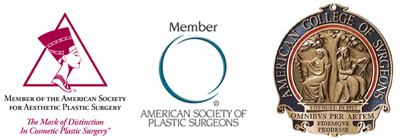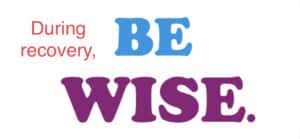Be Ready for A “HIBERNATION” Period
Facelift and neck lift procedures are done to rejuvenate the face including the cheeks, jaw line, jowls, and including the neck area. These operations are extremely effective in making us look younger, healthier, and more beautiful. Success rates are extremely high with very low risks for the majority of patients. The incisions are placed in privileged locations around the ears and are tucked behind the tragus of the ear. This location allows for incisions that fade better than any other part of the body! The recovery is characterized by very little pain, but significant bruising. It takes time for the bruising to resolve. I describe it as a “hibernation” period, where you are home resting and letting the bruising go away. This educational writing will review the typical recovery from facelifts, and it will review specific instructions to help us heal uneventfully. It was written at the request of a patient from Philadelphia, PA.

Overview:
It is critically important to understand that you must relax and take it easy after cosmetic facial procedures. Some people have said, “Doc, I understand that I have to rest and chill out.” This is their way of describing the importance of resting and relaxing after a facelift. I call it a “HIBERNATION” period. We are hiding and recovering to allow for appropriate healing. It’s extremely important to follow all post operative instructions to maximize our chances of the best results. The instructions are described below in detail, and it is paramount to review.
This operation has a distinctly different recovery than operations like a tummy tuck or breast augmentation. I’ll describe it as having a different “flavor.” Facelifts tend to have very little pain. It can be surprising how little pain there is for many people. However, they have visible bruising that needs to resolve before you can get back to your normal life. Tummy tucks and breast augmentation have the opposite recovery with much more pain and no visible bruising. To repeat myself, facial operations tend to have very little pain but visible bruising, since it’s on the face. It will take time for the bruising to resolve. I think this is excellent news for most patients. The pain is minimal for most! We just have to allow time and hibernation to heal.
As with all cosmetic surgery procedures, it is important to have realistic expectations about how young these operations make us look. They do not turn a person into a Movie Star or into a 25 year old person. These operations ONLY help us and ONLY improve us. You must understand they have limitations in how young you will actually look. This writing describes the recovery from these wonderful cosmetic facial operations.
Specific Instructions:
SIMPLE YET STRICT INSTRUCTIONS !
1- Head Elevation
It is important to keep your head elevated at all times. This includes sleeping. This can be done in a lounge chair or in a bed with multiple pillows. Please maintain at least a 45° angle of head elevation. The head elevation minimizes bruising, swelling, and problems with healing. As with all instructions, this is extremely important and your head should not be put down for one second.
Think about what happens when you put your head down to tie your shoes. When I do this, blood rushes to my head, and my head turns red. If this was done shortly after surgery, the blood rushing down to the face can actually pop off a stitch and start up bleeding or increase bruising and swelling. It is something we do not want to do at all. It is extremely important to keep your head elevated at all times, including when sleeping. Head elevation should be for approximately 2 weeks. It is absolutely critical during the first 3 to 5 days. I will let you know, based upon healing, when this becomes less important.
2- Chin Up
“Chin up” means that the chin area is extended up and away from your chest. If you are at a 45° inclination with your head elevated, the “chin up” position would mean that your face is looking up to the ceiling. This “chin up” position takes tension off of the incisions, and it increases the blood supply to the areas that are healing. I have found this it to be extremely important and should be followed strictly until further notice, usually 3 to 5 days.
Reading is a chin down position. Recovering from a facelift can be boring, and because it is a chin down position, reading is something that is NOT recommended. It’s something that I would want to do after surgery. However, if you are going to read, the book needs to be really elevated up high so you can maintain the chin up position. Neck rolls or airplane pillows can assist you in getting the chin up and maintaining the chin up position. No pressure on the front of the neck is allowed. So, no rolls or pillows on the front of the neck.
It’s ok to put your chin down to walk or go to the bathroom. It’s also ok to put your chin down to eat at the kitchen table for a short period of time. Most of the time the chin should be continuously elevated until further notice. This instruction for the strict chin elevation is usually for the first 3 to 5 days. After your healing, it becomes less important, and I will instruct you when you can assume a more neutral or natural position of your neck.
3- Rest, Relax, and Whisper!
This is a big and important concept. It is extremely essential to understand. It’s one that I think people have the hardest time understanding and following after surgery. It means after surgery that we need to be relaxed with low anxiety, calm, and low blood pressure. It’s good to be in a meditative mindset – relaxed, whispering, and chilling. I am going to explain why this is extremely important.
In medicine there is a term called a VALSALVA. It’s when we bear down and contract our core muscles. The bearing down might be to lift heavy objects or to have a bowel movement. When a person bears down or has a VALSALVA, the body contracts and the diaphragm contracts and sends blood up through the jugular venous system into our head. Just like when we lift a heavy object, our face might turn red. Valsalvas are a big problem after cosmetic facial surgery. Imagine someone screaming and yelling after surgery. Their face would turn red, and they could increase bleeding and hinder healing. They could actual start bleeding! Screaming is a big valsalva. But here is something that is interesting. Laughing is also a valsalva. So we don’t do yelling or screaming, but we also don’t do laughing after surgery. Even loud talking is a form of valsalva. Imagine the orator in a big lecture hall, as he talks, the veins in his face stand out as he uses small valsalva contractions of his diaphragm to project his voice.
So the “Rest, Relax, and Whisper” is understanding that after surgery, we are lying down relaxed, calm, and almost in a meditative state. There’s no laughing, screaming, yelling, bearing down, talking loud, lifting, or high anxiety. We also try to not throw up, strain at bowel movements, cough, or sneeze. Some of these things are impossible not to do after surgery, and this is understood. But we do our best to minimize all these activities. The wise patient will literally whisper, “I understand you Dr. Saunders. I’m just going to sit here quietly, calmly, and heal as best I can!”
I prescribe anxiety medications to all my patients. Some people will need them after these operations to help relax. This is good to use. If you know your personality is on the high anxiety side, then be prepared to use this medication to help relax and recover.
Other Instructions and Informational Points:
1- Icing
Ice application to the cheeks, face, and neck area is good after surgery. It’s extremely important for the first 72 hours. No direct ice application to the skin. The crushed ice should be placed in a Ziploc bag and covered by a damp washcloth to avoid direct contact of the ice to the skin. Reusable ice packs are good too, but please cover them with a damp washcloth to avoid direct skin contact. I recommend icing to be done approximately 20 minutes on and 20 minutes off, whenever you are awake.
2- Bandages
The bandage goes around the head and the neck area. Your eyes, nose, and mouth are purposely not covered. Try not to disrupt the bandage, as it has been meticulously placed by me after surgery. If it does become disrupted by accident, please re-wrap it, but keep it on the loose side. A tight bandage could cause injury.
There’s a mandatory visit in the office the next day after surgery. The bandage will be changed for a clean one. It tends to be much more comfortable. This is when you get to see your face for the first time after surgery. So the first visit is a fun one, as you get to see the beginning of the healing process and see your new face.
This bandage is worn for 72 hours at which point it can be discarded. This happens to be also the time that you’re allowed to shower for the first time.
3- Bleeding
It’s common to have some spotting of blood around and behind the ears on the first bandage. This is normal. It will be changed on your first visit, which is the day after surgery. Please call if you believe you have excessive bleeding. This is not common, however. Some blood is to be expected after all operations.
4- Showering
You will be told when to shower afterwards, which is approximately 72 hours or 3 days after surgery. At this time you can wash your face and hair with shampoo. Please be gentle, and don’t pull at any sutures or clips that have been used for the operation. Please let your hair air dry, and do not use a hair dryer until further notice. This is usually ok after approximately 7 to 10 days.
5- Medications
It is imperative to take the antibiotics that are prescribed by me. Pain medication, nausea medication, and anxiety medication are also prescribed and to are be used as needed. The anxiety medicine might help some people rest, relax, and whisper that was discussed above. This is good for some people who have a hard time relaxing. Be careful about the pain medication. Narcotics can make some people throw up, And we don’t want this. Tylenol and Motrin usually are enough for most people to relieve pain.
6- Incisions
Sutures and clips are gradually removed over approximately 7 to 14 days. They are not removed all at once for most people. If you have scabbing covering up a suture, it can hurt to remove the suture and scab at that first time. I have found it’s completely safe to just let the scab gently come off and remove the suture at the next visit. This does not change the the cosmetic appearance of the incision at all. The sutures come out gradually. Approximately a week after surgery, the vast majority of your sutures are removed. And the few remaining ones are removed on your next visit or two.
The incision should be treated with Neosporin twice a day for 3 days and then Bio-Oil is recommended twice a day for a month.
7- Exercise and Activity
Activity should be kept to a minimum initially. It’s still important to have early ambulation and walk around the house to minimize the risk of blood clots. For the first week, we are predominately at home allowing for bruising and swelling to resolve. We are hiding, hibernating, and relaxing. Most people can return to work after 1 week to 2 weeks. A lot of this depends on how much privacy you want. Recovering from a facelift involves a certain amount of hibernation to let bruising and swelling go away. The person who doesn’t care about visible bruising and swelling can just cover it with make-up; they can go back to work after approximately 10 days. This of course depends upon your follow up visits and me approving your return to work.
Other people will need more time to allow for bruising and swelling to go away. Two weeks is good for many people. 3 to 4 weeks is necessary for people who want to be extremely confidential. I often describe recovery from a facelift in the following way. Approximately 10 days after surgery, you and a husband or loved one can go out for dinner, wearing a little bit of make-up. At this time you will be medically cleared to go out for dinner. However, some people might have residual bruising, and if this is of concern to you, then you will need a bit more time to allow for bruising to go away. This typically means an extra week for resolution of left over bruising and swelling.
Summary:
Recovery from facelift and neck lift operations is an important part of the overall process of looking younger and healthier. The patient must be ready to follow simple but strict instructions. We don’t want to have any problems, so learning what is necessary to get the best results is critical. The recovery can be thought of as a hibernation period. During this time we are waiting for bruising and swelling to slowly resolve. The concept of rest, relax, and whisper is reviewed in this writing. Its purpose is to minimize any valsalva, or bearing down, which can lead to problems and delayed recovery. All patients get my personal cell phone, and they are encouraged to keep in close contact with me for any questions or concerns. Mandatory office visits after surgery ensure that everyone knows what is to be done and how they are progressing.




